Are American Cars Reliable, And Does It Even Matter?

Over the past six years, annual report cards from Consumer Reports indicate that domestic automakers are sitting among the bottom of the pack in terms of reliability and satisfaction ratings. Out of a score of 100, the big three domestic automakers average a score of just 55.7. Individually, Ford ranks the highest, with an unimpressive average score of 63.1 over the same time period, with GM averaging 56.1 and Chrysler averaging a simply abysmal 48.
J.D. Power also shows that a number of domestic automakers have below the industry average numbers in regards to problems per 100 vehicles. Chrysler, Dodge, Jeep and Ram are the worst according to the 2012 J.D. Power Vehicle Dependability study, with GMC and Chevrolet also performing below the industry average.
Additionally, cars from these manufacturers don’t get the nod from Consumer Reports, with the percentage of recommended vehicles per year often dipping below 50%. It’s a little worrying when Chrysler as a whole, had 0 cars recommended in 2009.
TOTAL RECALLS
One important factor in looking at the reliability of these cars comes with the amount of recalls that are issued. For example, Ford announced serious recalls for the latest models of the Ford Escape and Fusion, two all-new vehicles in highly competitive markets. The compact Chevrolet Cruze also had a worrying fire-related recall, which affected every single model sold. Missteps like these seem to be common for domestic automakers.
“It just shows that many of the domestic automakers have teething issues with their new products,” says Anita Lam, chief automotive statistician at Consumer Reports. Lam points out that these domestic automakers tend to have issues early in a new car’s lifetime, which then get fixed in the following updates. “The product then gets to a good point of reliability,” says Lam, but it’s a vicious cycle as they then have to, “undergo a redesign or add better performance, and the reliability dips again.”
Lam explains that these issues aren’t the only sore spot with domestic automakers. Consumer Reports finds significant issues in regards to build quality. “We saw significant gaps and problems with door alignment during testing,” she says. This lines up well with what J.D. Power reports in its annual Quality Ratings by brands with domestic automakers like Dodge and Ford having the lowest possible ratings in overall quality.
There also seems to be a bit of an issue when an automaker tries to jump ahead. Lam points to new technology like MyFord Touch, which is cool, but riddled with bugs, usability issues and required updates which tarnish the lustre of high-tech innovation.
The same can be said about Ford’s PowerShift transmission, which introduced dual-clutch technology to its economy cars. However, performance and reliability was far below expectations, and Ford’s reliability ratings suffered.
DOMESTIC BASHING: JUST A FAD?
Not everyone shares the viewpoint offered by Consumer Reports and J.D. Power. Karl Brauer of Total Car Score, seems to hint that the domestic-bashing is a bit of a fad, with no real basis today.
“It really started in the early 1970s,” explains Brauer. “Build quality (along with fuel efficiency and even styling) for domestic cars suddenly couldn’t compete with the rush of Japanese (and to a less extent, Europeans) cars entering the U.S. market,” he says.
SEE ALSO: Are German Cars Reliable? The Myth of “German Engineering”
Looking at the scores of domestic vehicles on Total Car Score, there doesn’t seem to be any hint that domestic vehicles are unsatisfactory, prone to break-downs or terrible to drive. Looking at the site’s ratings of the latest compacts, the Buick Verano tops the list with a score that ekes out the Subaru Impreza and Volkswagen Golf. Looking further down the list and other American products like the Chevy Cruze, Dodge Dart and Ford Focus stand out above imports like the Hyundai Elantra, Kia Forte and Mitsubishi Lancer. With these ranking in mind, Brauer argues that past mishaps from domestic automakers are still fresh in the minds of buyers.
“The oil embargo and resulting fuel price spikes of 1973 really highlighted the gas guzzling nature of big American cars while giving the smaller Japanese cars a sudden advantage because of their fuel efficiency,” Brauer states. “Since that time, the Japanese have continued to sell highly fuel efficient and well built cars in the U.S. (with a few notable exceptions), while the U.S. automakers have had to play catch up in both areas.”
Brauer points to the SUV craze of the 1990s and 2000s. He argues that back then, the domestic automakers ceded the car market to the imports in an effort to nab more profit margins by selling more trucks and SUVs. However, when gas prices spiked again in 2005, no buyers were interested in fuel hungry SUVs and the popular domestic vehicles were left behind. The smaller cars that domestic automakers rushed out to meet the demands of consumers were not as well built as the competition from imports. Domestic vehicles from that that time were certainly behind the market leaders from Japanese automakers.
Brauer also argues that recalls aren’t that significant in the grand scheme of things.
“The all-new Ford Fusion is an excellent car overall, though it did have some recalls during launch that reflect a need for Ford to further improve its QA process for all-new cars,” he says. “The same situation existed for the new Ford Escape. It’s a great crossover in general, but it had too many recalls during launch.”
“In the long run these recalls don’t matter nearly as much as the vehicle’s styling, handling, fuel efficiency and price/value equation, so those two models should still prove to be a great sellers for Ford,” he says.
Still, there’s no question that domestic automakers like Ford are still playing catch-up. “To be on par with the Japanese, Korean and European automakers they shouldn’t have had so many recalls on two very important all-new models.” explains Brauer.
However, if the numbers of recalls indicate an automaker’s quality and reliability, the import market isn’t immune to large scale recalls.
This year Toyota topped the number of recalled vehicles in the US, making it three years out of the past four that Toyota took the top spot in this shameful ranking. It’s also worth noting that the automaker sitting in second place is (the usually regarded as reliable) Honda. Even with the high number of recalls, these two automakers are regularly regarded as having top reliability scores, meaning that they aren’t as big of an issue in the long run.
SEE ALSO: Toyota Lead Number of Recalled Vehicles in 2012
Following the two big Japanese automakers is GM, Ford and Chrysler, with Ford being recognized as having the most recall campaigns this year.
THE AMERICAN COMEBACK STORY
Consumer Reports’ Lam explains that there is a bright spot when it comes to domestic automakers. “We also conduct owner’s satisfaction surveys, which indicate that buyers don’t seem to care who makes the car, as long as it meets their expectations.”
One market-segment that sees a lot of positive results is the green car segment. “Chevrolet Volt owners, for example, love their car,” she says. “Ninety-two percent of them would buy another one.”
She also explains that gas-guzzling V8 muscle cars and performance cars, like the Dodge Charger, Chrysler 300C and Chevrolet Corvette get above average satisfaction marks from owners. “There are expectations of performance, and these cars really come through,” she says.
Brauer agrees that the work domestic automakers are putting in on alternative fuel technology is paying off, remarking on the Chevy Volt, upcoming Cadillac ELR, Ford C-Max as well as the Fusion Hybrid and Energi vehicles. “It seems like the domestics understand not only the need for good current product but constant innovation on future product,” Brauer says.
Like German vehicles, despite the tough reliability scores, domestic automakers tend to rank highly in a the Automotive Performance, Execution & Layout (APEAL) rankings with American brands sitting around the industry average in JD Power’s annual study.
It’s hard to ignore the glaring recalls and low numbers of recommended vehicles by consumer publications, though it seems the buying public is doing just that, instead favoring other factors and making cars like the Ford Focus the sixth best selling car in America in 2012.

Sami has an unquenchable thirst for car knowledge and has been at AutoGuide for the past six years. He has a degree in journalism and media studies from the University of Guelph-Humber in Toronto and has won multiple journalism awards from the Automotive Journalist Association of Canada. Sami is also on the jury for the World Car Awards.
More by Sami Haj-Assaad



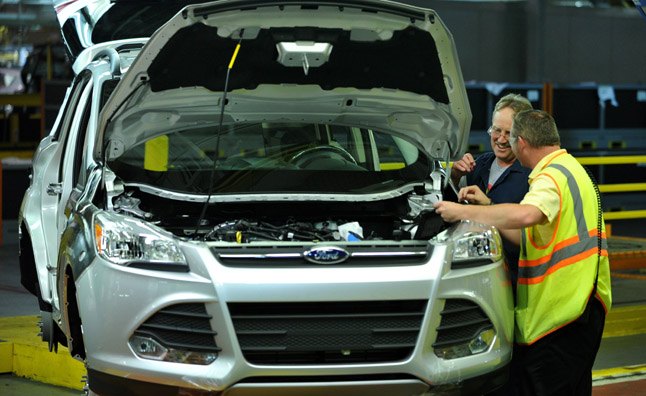

















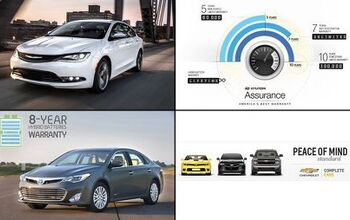





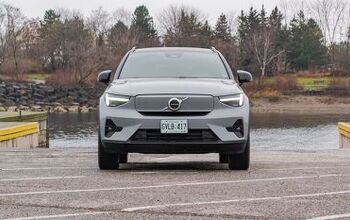





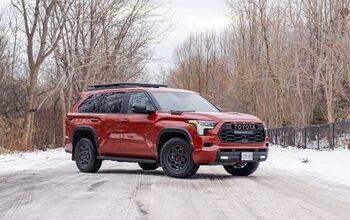
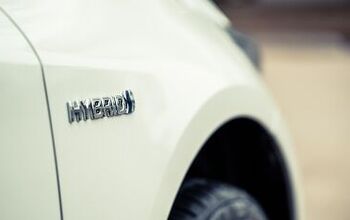

Comments
Join the conversation
Recalls - yes they are annoying and no doubt American cars could be doing better. But reliability is also about the ability to clock in high mileage without any maintenance apart from regular fluid changes/top-ups and tire rotation and brake pad replacement (this one shouldn't need to be done THAT often though). The car should not break down while in motion, or have its trunk closer fail and leave the trunk un-openable, or have its air suspension fail and cause the car to list to one side until it's fixed. At one point German cars were indeed much more reliable than American cars from that perspective. The Japanese, needless to say, had and still have the top spots. But in recent years, American cars have surged ahead of any European make when it comes to that definition of reliability. I've had a last gen Fusion with no mechanical or electrical issues in 6 years - at 120,000 km I traded it for a new hybrid current-gen Fusion and it's also been running great without issues. No check engine lights, no lights failing, no wipers failing, and the fancy electronic gizmos like parking sensors are all in good order. All my friends who own German cars have had fuel pumps or water pumps needing replacement in less than 2 years, and check engine lights galore, and fancy electronic luxury features short out. The most impressive problem was a windshield wiper on a BMW failing and colliding with the other one, tearing it right off during a storm. One friend in particular is kicking himself after replacing an Acura (which went for 13 years and 300,000 km with zero issues) with a brand-new fully loaded VW Touareg diesel that has seen 8 problems and over 20 dealer visits in 2 years, and now the diesel scandal has left him unable to resell it without taking a loss that would make Fords seem like an investment. In Europe, where Asian brands have historically had a difficult time penetrating, Ford (along with GM's subsidiaries like Opel and Vauxhall) are selling very well as "regular reliable" cars for the masses, and even managed to steal some luxury market share (i.e. loaded trims of the Mondeo or the Insignia). American brands were crap, but now have a well-deserved second place.
good read